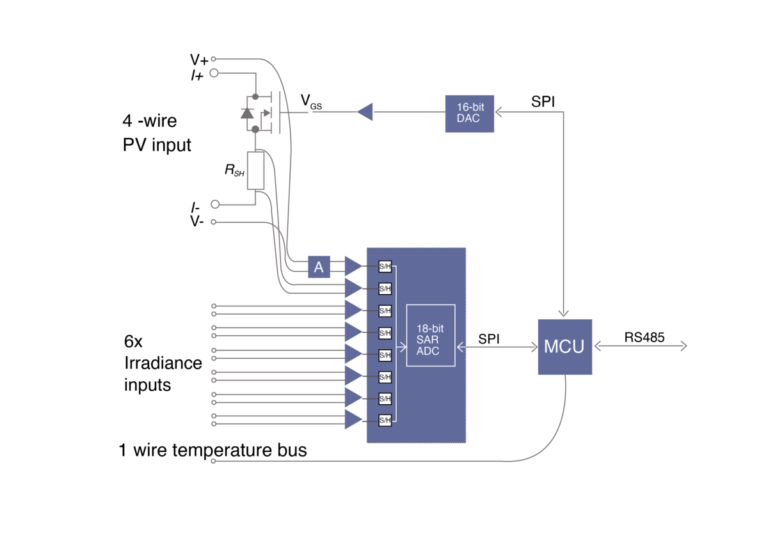Researchers in Slovenia have built a monitoring system for vehicle-integrated solar photovoltaics, consisting of an IV curve scanner using a MOSFET as a voltage-controlled electronic load. The system also uses an 18-bit analog-to-digital converter and a microchip microcontroller.
Scientists from the University of Ljubljana in Slovenia have developed a monitoring system to estimate the effect of energy production on the driving range of vehicles with solar panels.
The monitoring system, called PV measurement unit (PVMU), consists of a IV curve scanner that uses a MOSFET as a voltage-controlled electronic load. It uses an 18-bit analog-to-digital converter (ADC) and a microchip microcontroller (MCU), with the ADC reportedly capable of simultaneously sampling 8 differential input channels at a sampling rate of up to 200 kHz.
A vehicle-integrated photovoltaic (VIPV) module can be connected to the electronic load in a 4-wire configuration. The current clamps are connected to the MOSFET and the voltage sensing voltage is adjusted to the range of the ADC by a resistor-based attenuator.
“The current is measured using a very accurate shunt resistor (RSCH) in a 4-wire Kelvin connection,” the research group explains. “Both resulting voltages are obtained by the first two differential ADC inputs. The remaining 6 input channels are used as general voltage inputs for irradiation sensors and are scanned simultaneously with the IV curve of the PV module.”
In addition, the PVMU uses variable gain voltage amplifiers to match the input signal range to the ADC input range and a 1-wire communication bus to sense external digital temperatures. “The entire device is controlled via an RS485 bus from a personal computer, which is used for display, storage and analysis,” the academics added.
The system was tested in a 192.4W crystalline PV module mounted on the top of the Tesla Model 3 electric vehicle using the car’s roof rack system. All data from the PVMU was stored in an application-specific MySQL database in real time, testing different driving scenarios under different environments and weather conditions.
“The car was normally used on daily journeys of 15 km commuting during working days from a house in the countryside to the Faculty of Electrical Engineering, University of Ljubljana (ULFE) and back, parked in an open parking lot at ULFE for most of the time. day and drove home in the late afternoon and parked in a covered parking lot,” the academics said, noting that they attempted to use the car in a normal, everyday manner. “Occasionally we took longer drives, some of them on the highway, parked in covered parking lots and garages, and took some family outings on the weekends.”
The two-month tests showed that radiation measurements from all relevant sides of the vehicle are critical, and that only fast-response solar cell-based radiation sensors are suitable for these measurements.
“A sampling time of 1 second is sufficient to monitor VIPV harvested energy with a relative error of less than 0.1% under normal vehicle use,” the researchers said, noting that even during parking partial shade can cause significant MPP variations cause on a time scale of 1 s. “The same period is also recommended between IV curve scans.”
The team said the tests showed that VIPV is unable to cover the energy required for daily driving, especially in winter. “It turns out that the Tesla Model 3 itself consumes approximately 200W while driving and in standby, with sentry mode enabled to power sensors, cameras, security systems, auxiliary power, and the mainframe computer,” it further explains. “This consumption is comparable to the basic consumption of an average household, and it is a challenge to be supplied exclusively with VIPV.”
Their findings can be found in the study “Monitoring solar radiation and PV module performance in mobile applications”, published in Solar energy materials and solar cells.
This content is copyrighted and may not be reused. If you would like to collaborate with us and reuse some of our content, please contact: editors@pv-magazine.com.


